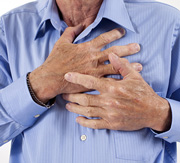< Return to trials
Acute Coronary Syndrome (ACS)

Overview
Lillestol Research has performed several trials with an ACS component. Many of the trials have involved an event within a certain time period of randomization. As an outpatient clinic, the longer the window for randomization post-event, the better for our recruitment success.
Spotlight Trial(s)
This was an outpatient trial with a 7-week window for randomization post-event. This trial recruited individuals who had suffered a recent heart attack. Lillestol Research was able to successfully meet the sponsor’s enrollment expectation randomizing 5 patients in a 20-month enrollment period.
Acute coronary syndrome (ACS) is usually one of three diseases involving the coronary arteries: ST elevation myocardial infarction (30%), non ST elevation myocardial infarction (25%), or unstable angina (38%).[1]
These types are named according to the appearance of the electrocardiogram (ECG/EKG) as non-ST segment elevation myocardial infarction (NSTEMI) and ST segment elevation myocardial infarction (STEMI).[2] There can be some variation as to which forms of MI are classified under acute coronary syndrome.[3]
ACS should be distinguished from stable angina, which develops during exertion and resolves at rest. In contrast with stable angina, unstable angina occurs suddenly, often at rest or with minimal exertion, or at lesser degrees of exertion than the individual's previous angina ("crescendo angina"). New onset angina is also considered unstable angina, since it suggests a new problem in a coronary artery.
Though ACS is usually associated with coronary thrombosis, it can also be associated with cocaine use.[4] Cardiac chest pain can also be precipitated by anemia, bradycardias (excessively slow heart rate) or tachycardias (excessively fast heart rate).